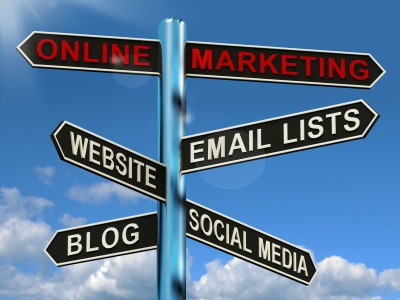Online nurseryman Kermit Carter had a business puzzle to solve in mid-2012 at his small family farm on the Northern California coast. Repeat business was increasing daily for the flowering horticultural sages that Carter and his wife were growing and shipping to customers nationwide from their Flowers by the Sea nursery.
Carter says he wasn’t certain what would be the most efficient way to get word out about new products so FBTS could sell them in timely fashion.
Most sages are part of the Salvia plant genus, which is the largest group in the mint family and contains up to 900 species worldwide. FBTS grows more than 300 species, Carter says, and greenhouse tables can get crowded.
What’s a niche entrepreneur to do when a quick solution is necessary, because days are crowded with farming, carpentry, troubleshooting, maintaining a company website and marketing?
Harnessing Email to Grow Sales
Then the email marketing light bulb flashed on, Carter said. The longtime software engineer realized that customers were doing a good job of using a simple click tool he had built into the company’s online-only catalog allowing them to place their names on waiting lists for out-of-stock plants.
So Carter settled on a simple tech solution. Instead of waiting for the customers to come to him, he would go to the customers by reaching out to them through an email marketing campaign. He decided to harness the marketing power of email by sending out brief, photo-illustrated alerts.
“I don’t think people like getting emails all the time,” Carter explains, so he limits them to one or two a week.
Each alert leads a reader to a page describing a new plant and providing click-through access to a one-stop purchase page on his website. Carter says that subscribers get first dibs on a limited quantity — usually 12 to 20 pots — of the plant. Carter builds his subscriber list based on a list of current customers.
Push Comes to Quick Conversion
Carter’s alerts fit into a category of online promotional marketing often referred to as a mobile push message or conversion email that encourages rapid buy-it-now behavior. Customers generally are familiar with and subscribe to the business from which they buy the goods.
A push message is what you might call urgent marketing; it announces an on-the-fly opportunity to purchase something immediately or within a few hours of receipt. For example, restaurants often use push messages to increase lunch or dinner traffic. They send customers short-term coupons, which are stored in customers’ smartphones or computer pads.
The Small Business Administration says that when writing a call-to-action email, keep it short, simple and include product art. The first step is to choose a brief subject line that answers the customer’s question of what the email offers and when action is required. The material inside the email needs to be similarly concise and focused. Include a quick-response link as well.
This kind of promotion often requires rapid action. Carter notes that 20 to 35 percent of his subscribers open each of the company’s sales alerts. By March 2013, he adds, 60 percent of the emails resulted in sell-outs within an hour’s time. A customer who opens an alert too late for a first-round purchase may opt to click the wait list button for notification when the plant is available again. It’s a win-win process providing the company with a bumper crop of sales to harvest.
Solving a Small Business Problems With Email Marketing

